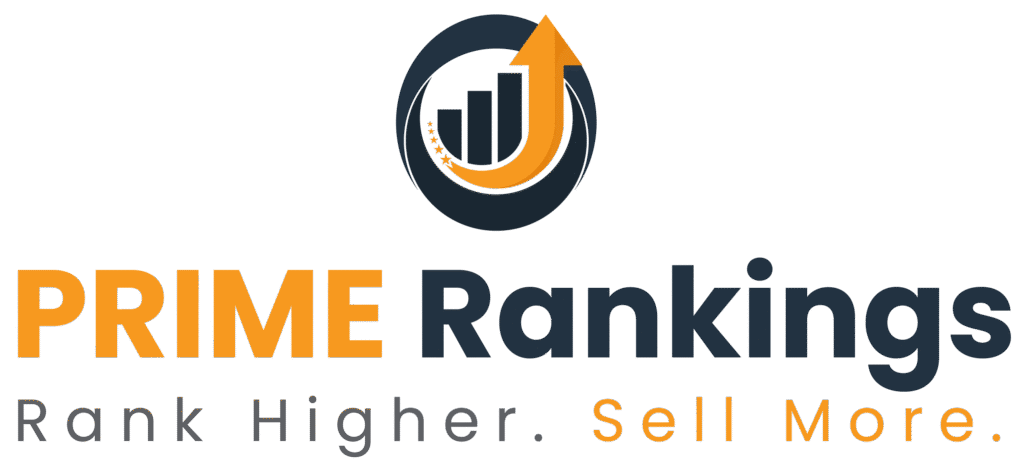In the ever-evolving and fiercely competitive world of Amazon, understanding and predicting your product’s future performance is one of the most critical factors that can determine your success. Whether you’re a new seller just beginning to navigate the Amazon marketplace or a seasoned business owner looking to scale, forecasting your products effectively can lead to better decisions, optimized inventory, and ultimately, greater profits.
At Prime Rankings, we believe that a good product forecast is not just a tool—it’s an essential strategy for Amazon success. In this article, we’ll explore the importance of forecasting, how it affects every aspect of your Amazon business, and why expert guidance can help you leverage forecasting to your advantage.
What is Product Forecasting on Amazon?
Product forecasting is the process of predicting future sales performance based on historical data, current trends, seasonality, and other market factors. This could include forecasting how many units of a product you expect to sell over a specific period—whether it’s a week, month, or quarter.
In the context of Amazon, product forecasting goes beyond just estimating how much inventory to stock. It involves understanding customer behavior, anticipating demand spikes, optimizing marketing efforts, and ensuring that your listings are well-positioned to capture attention. Accurate forecasts also help you plan for promotions, handle seasonal fluctuations, and make smarter decisions about restocking.
Why is Product Forecasting Important?
1. Optimizing Inventory Management
One of the most crucial aspects of selling on Amazon is inventory management. Running out of stock can hurt your sales, hinder your Amazon rankings, and disrupt your advertising campaigns. On the other hand, overstocking leads to unnecessary storage fees and ties up your working capital.
A solid forecast helps you strike the right balance between supply and demand, ensuring that you never run out of stock or overstock inventory. With accurate forecasting, you can predict when you’ll need to reorder, how much to order, and when to expect sales surges based on market trends.
2. Boosting Your Amazon Ranking
Amazon’s algorithm considers sales velocity and inventory health as important ranking factors. Sellers who consistently meet demand and maintain adequate stock levels are more likely to have their products ranked higher in Amazon’s search results. Predicting sales and adjusting your stock accordingly is crucial for maintaining the competitive edge.
By forecasting your products, you can ensure your listings remain active and continue to perform well. This helps maintain your rank in the highly competitive Amazon marketplace, where success is often determined by how quickly and efficiently you can fulfill customer demand.
3. Planning for Seasonal Fluctuations
Every business experiences ups and downs depending on the time of year. Amazon sellers are no exception. Certain products, especially those in niche markets or seasonal categories (e.g., outdoor gear, Christmas decorations, or fashion), tend to have varying levels of demand throughout the year. Without a good forecast, sellers can miss out on key seasonal opportunities.
For example, if you’re selling holiday-specific items, a solid forecast can help you plan for a surge in sales leading up to key dates like Black Friday or Christmas. It also helps to prepare for a drop in demand right after those dates, so you can adjust your inventory levels accordingly.
At Prime Rankings, we help our clients understand seasonal trends and build forecasts that take into account these fluctuations, ensuring that your inventory is optimized throughout the year.
4. Effective Advertising and Promotions
Accurate product forecasting can also guide your advertising strategy on Amazon. By understanding when demand will be highest for a particular product, you can time your advertising campaigns more effectively. You’ll know when to increase your ad spend, optimize bids, and allocate your resources.
Without forecasting, your advertising efforts might miss the mark—resulting in wasted budgets or missed sales opportunities. A good forecast helps you understand how much you should spend on ads and when to focus on promoting specific products.
Key Factors to Consider in Product Forecasting
1. Historical Sales Data
One of the main drivers of product forecasting is historical sales data. By analyzing past sales patterns, you can make educated predictions about future demand. This includes understanding your product’s performance during different times of the year, factoring in the impact of past promotions, and recognizing any consistent patterns in consumer behavior.
For example, if you’ve sold an average of 100 units per month for the past year, but a particular month saw a 20% increase in sales due to a promotion, you’ll want to account for that in your forecast moving forward. Historical data helps to smooth out any uncertainties and gives you a baseline for future predictions.
2. Seasonality and Trends
As mentioned earlier, seasonality plays a major role in forecasting. By closely monitoring seasonal demand shifts, you can plan your inventory and marketing strategy in advance. Understanding trends like back-to-school shopping, peak holiday periods, and weather-driven demand changes helps to maximize your sales during these key times.
Additionally, you’ll need to account for changes in consumer behavior and market trends. New product releases, emerging trends in the marketplace, or changes in customer preferences can all affect the demand for your product.
3. Competitive Landscape
Your competitors’ actions should also play a role in your forecasting. If competitors run out of stock or change their pricing strategies, it can create new opportunities or challenges for your business. Staying on top of the competitive landscape ensures that your forecast remains relevant in the face of shifts in the market.
At Prime Rankings, we offer competitive analysis as part of our service suite, helping clients understand their position in the market and adapt their forecasts accordingly.
4. External Factors
External factors like economic conditions, new legislation, or even global events (e.g., supply chain disruptions or pandemics) can impact demand. For instance, changes in consumer spending behavior during economic downturns or spikes in demand due to unforeseen circumstances can alter the way you forecast sales.
Having a flexible forecasting model that can be quickly adjusted in response to external factors is vital for keeping your business agile and resilient in the face of change.
How to Improve Your Product Forecasting
1. Utilize Amazon’s Forecasting Tools
Amazon offers a variety of tools and reports that can help you forecast product demand more accurately. Amazon’s Brand Analytics and Manage Your Experiments tools offer insight into customer behavior, sales trends, and even competitor activity. Using these tools can help refine your sales projections.
Additionally, Amazon’s Replenishment Reports provide recommendations on how much inventory you should be ordering based on past sales and forecasts.
2. Leverage Advanced Forecasting Software
While Amazon’s native tools are helpful, leveraging external software can provide even deeper insights. There are numerous third-party forecasting and inventory management tools designed to integrate seamlessly with Amazon. These tools analyze vast amounts of data and can help you predict sales, manage stock levels, and plan for future demand more effectively.
At Prime Rankings, we recommend and integrate these software tools for clients who need a more detailed, custom forecasting approach.
3. Track Key Metrics Regularly
To maintain an accurate forecast, it’s important to track key performance indicators (KPIs) regularly. Metrics like sales velocity, page views, conversion rates, and advertising spend can all provide insight into the health of your product listings. Regular monitoring helps to adjust forecasts in real-time, preventing stockouts or excess inventory.
4. Work with an Amazon Expert
Product forecasting is a complex skill that requires knowledge of Amazon’s platform, analytics, and marketplace trends. Working with an expert can take the burden off your shoulders, ensuring that your forecasts are always up-to-date and aligned with your business goals.
At Prime Rankings, our team of Amazon experts works with you to develop accurate forecasts that keep your business competitive, help you avoid costly mistakes, and ultimately drive profitability.
Why Work with Prime Rankings?
A good forecast is just the beginning of a successful Amazon strategy. Having the right tools, processes, and expertise in place is essential for maximizing your business’s potential. At Prime Rankings, we specialize in helping Amazon sellers optimize their product forecasts, inventory management, and advertising strategies.
Whether you’re struggling with stockouts, want to improve your rankings, or simply need help managing your Amazon account, our team is here to assist. We take the guesswork out of forecasting, provide expert analysis, and offer actionable strategies that drive real results.
Let’s Build Your Forecast Together
A reliable product forecast is one of the most important steps in ensuring long-term success on Amazon. At Prime Rankings, we understand how crucial it is to optimize your forecasting process, and we’re here to help you every step of the way.
Contact us today for a free consultation or to ask any questions you may have. Let’s work together to create a customized strategy that helps your Amazon business thrive.
We look forward to working with you to forecast your future success.


